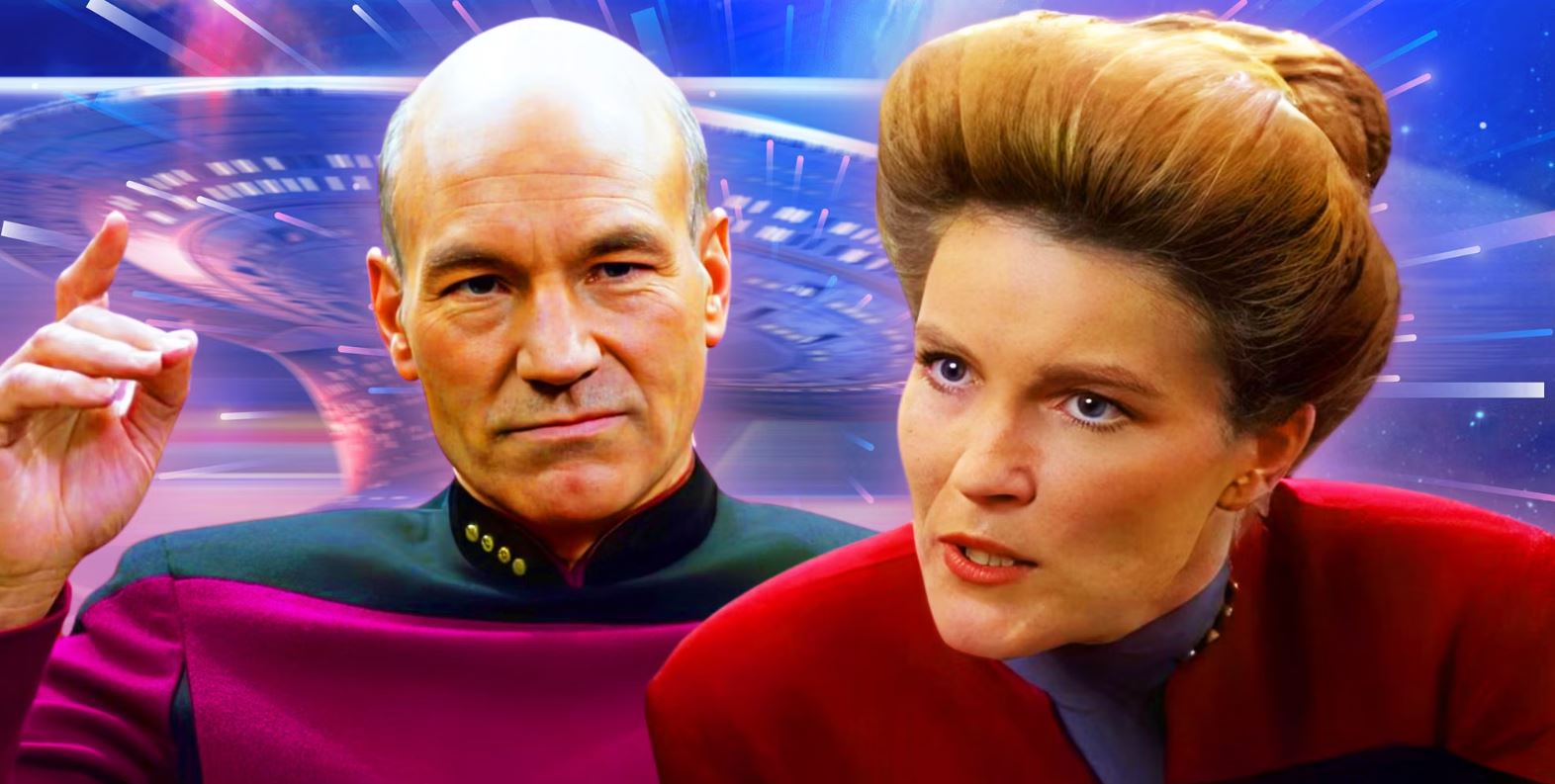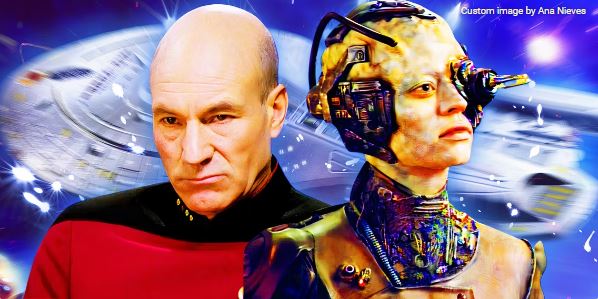Star Trek: Voyager copied one of Star Trek: The Next Generation’s best storytelling choices, giving both shows a unique aspect during the franchise’s classic era. Both Voyager and TNG are distinctive entries in the franchise, with their own hallmarks and things that set them apart from other series. TNG acted as the blueprint for Star Trek’s cadre of shows in the 1990s, but Voyager’s cast of characters and setting pushed the franchise into new territory in terms of science fiction concepts and diversity.
Still, out of all the classic Star Trek TV shows, Voyager and TNG arguably have the most in common. Voyager was an attempt by Star Trek’s creative team to return to more TNG-style storytelling, combating the innovative but more serialized arcs that Star Trek: Deep Space Nine created while it and Voyager aired at the same time. In terms of character dynamics and plot, Voyager also hit closer to TNG than either DS9 or Star Trek: Enterprise. This included one storytelling choice that set both TNG and Voyager up for success each season.
Star Trek: Voyager And TNG Ended Most Seasons With Two-Parters

Only two seasons from each show didn’t end with two-part episodes
Except for two seasons each, Star Trek: Voyager and The Next Generation ended every season with the first part of a two-parter. Two-parters often include some of the franchise’s best storylines, so on the whole, it isn’t surprising that Voyager and TNG choose to use them liberally. The only four seasons where they weren’t employed were TNG seasons 1 and 2 and Voyager seasons 1 and 4. In TNG’s case, the show was just getting its feet under it in terms of storytelling, and for Voyager, its initial avoidance was due to scheduling issues at the end of season 1.
DS9 didn’t end any of its seasons with two-parters, but this was likely because the show already employed serialized storytelling that flowed from one episode to the next more seamlessly.
However, every other season of both shows ended with a Part 1, while the next season opener picked up with the second part. Surprisingly, this made both TNG and Voyager unique in the 1990s era of Star Trek. DS9 didn’t end any of its seasons with two-parters, but this was likely because the show already employed serialized storytelling that flowed from one episode to the next more seamlessly. Likewise, Enterprise only ended one of its seasons with a two-parter, instead choosing to use them in the middle of seasons as a way to incorporate more contained arcs.
Why Star Trek Two-Parters Make Great Season Finales And Openers

Two-parters were one of 1990’s Star Trek’s greatest strengths
While there was nothing wrong with the way DS9 and Enterprise used two-parters, Voyager and TNG’s model arguably found the greatest success with them. Star Trek two-parters are often big productions, and while they can work well in the middle of a season, saving up the bandwidth for a season finale or season opener tends to inflate their importance and lead to much greater popularity for the episode. This was certainly the case with TNG, whose two-part episode “The Best of Both Worlds” is often considered one of the best Star Trek episodes of all time.
Two-parters also provide a built-in cliffhanger and hook to bring audiences back for more the following season. While this could be seen as an obvious ploy, there’s no denying that it works. Other series outside of the Star Trek franchise often use this technique with their season finales as well, although Star Trek shows often denote it more explicitly. In the case of Voyager and TNG, both ramped up their use of this cliffhanger tactic in later seasons, with Star Trek: Voyager especially creating some truly memorable installments in later years like “Equinox” or “Unimatrix Zero.”
